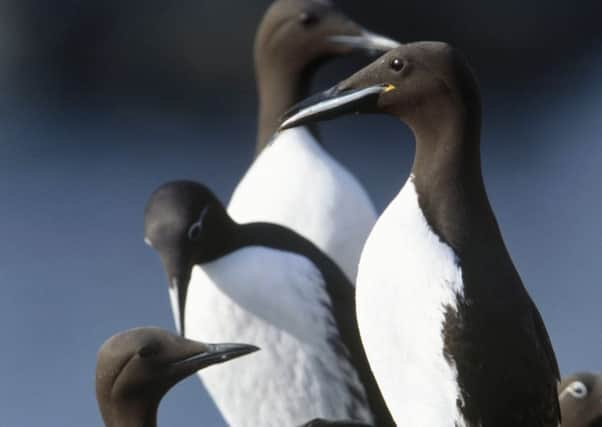UK's oldest seabird found on Hebridean island of Canna


The bird was originally ringed on the Inner Hebridean island in 1978. It was recently re-trapped by naturalists from the National Trust for Scotland’s Canna ringing team. The NTS, which owns the island, said it is a new longevity record for any British or Irish ringing scheme.
The conservation charity’s Canna ringing team also caught one 36-year-old guillemot, a 35-year-old and two 34-year-old birds.
Advertisement
Hide AdAdvertisement
Hide AdEstablished in 1969 to monitor changes among the island’s seabird populations, the ringing project is now one of Europe’s longest-running bird monitoring schemes.
Simon Foster, part of the ringing team, said: “It is incredible that a guillemot has survived this long. The birds live in a particularly challenging environment – the cliffside colonies are noisy and smelly places and guillemots normally spend the entire winter at sea. It’s a hard life. Despite this, the old bird we were reunited with was probably in better condition than any of the people who were out there doing ringing studies.
“I think this finding is a very good example of the value of long-term monitoring projects like this one.”
Canna’s cliffs to the west and north of the island, and south on the neighbouring island of Sanday, are home to around 15,000 seabirds of 14 different species.
Common guillemots make up roughly half of the seabird population, along with species like razorbills, shags, kittiwakes and Manx shearwaters.
The island once had a problem with non-native rats, which were eradicated.
Richard Luxmoore, the NTS’s senior nature conservation adviser, said: “The Canna ringing team has provided us with invaluable data about all of the species of seabirds that nest on Canna. In particular, they have shown how much progress has been made since the Trust took the decision to eliminate the invasive rat population.
“The latest results show that the seabird population is increasing once more, but the importance of such a long-lived study as this one is that we can see what effects climate change and other environmental conditions are having.”